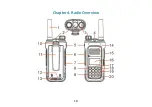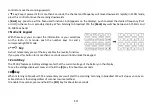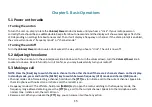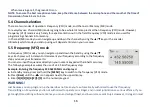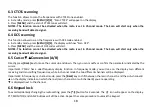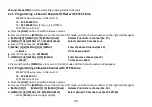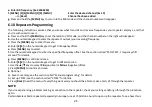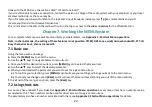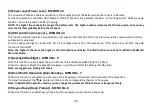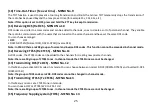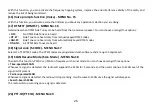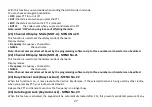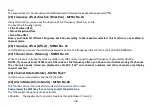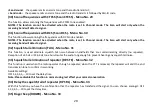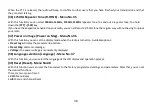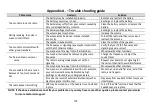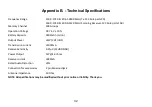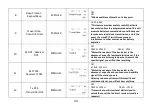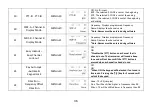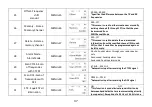
22
done with the P10UV, see the section called “1750Hz Tone-burst”.
If you're still unable to make a connection, contact the person in charge of the radio system with your employer or your local
amateur radio club, as the case may be.
If you for some reason want to listen to the repeater's input frequency instead, press
[* ]
key momentarily and you'll
reverse your transmit and receive frequencies.
This is indicated in the LCD on the radio with an R in the top row, next to the
plus
and
minus
for the offset direction.
Chapter7. Working the MENU System
For a complete reference on available menu items and parameters, see
Appendix C, Shortcut Menu operations.
Note: in channel mode, the setting of these features is not possible: CTCSS/ DCS tones, wide/narrow bandwidth, PTT-ID,
Busy channel lock out, channel name edit.
7.1 Basic use
Using the menu with arrow keys
a.
Press the
[MENU]
key to enter the menu.
b.
Use the
▲
/
▼
keys to navigate between menu items.
c.
Once you find the desired menu item, press
[MENU]
again to select that menu item.
d.
Use the
▲/▼
keys to select the desired parameter.
e.
When you've selected the parameter you want to set for a given menu item;
a)
. To confirm your selection, press
[MENU]
and it will save your setting and bring you back to the main menu.
b)
. To cancel your changes, press
[Back]
and it will reset that menu item and bring you out of the menu entirely.
f.
To exit out of the menu at any time, press the
[Back]
key.
7.2 Using short-cuts
As you may have noticed if you looked at
Appendix C, Shortcut Menu operations
, every menu item has a numerical value
associated with it. These numbers can be used for direct access of any given menu item.
The parameters also have a number associated with them, see
Appendix C, Shortcut Menu operations
for details.
Summary of Contents for Pofung P10UV Series
Page 1: ...USER S MANUAL...
Page 13: ...10 Chapter4 Radio Overview...



